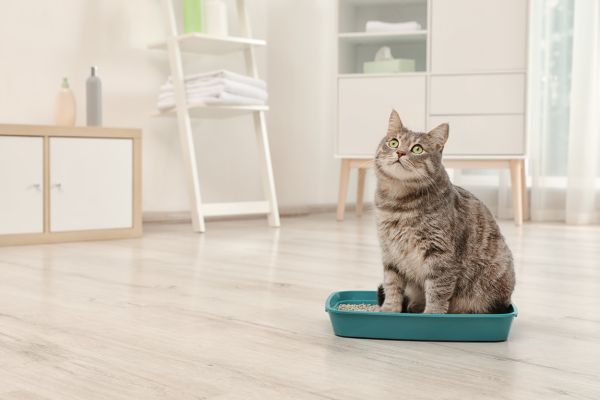Welcoming a cat into your home is a joyful experience, filled with moments of affection, playfulness, and companionship. However, becoming a responsible cat owner involves more than simply providing food and shelter. True cat care means understanding the physical, emotional, and social needs of your feline friend and ensuring they thrive in every aspect of their life. This guide will explore essential elements of cat care, offering new owners a comprehensive foundation for nurturing a happy and healthy cat.
Understanding Your Cat’s Needs
Cats are independent creatures, yet they rely heavily on their environment and human interactions to feel secure. Effective cat care begins with recognizing your cat’s unique behaviors and instincts. From the moment they enter your home, cats begin to adapt, and this adjustment period is crucial. They seek safe spaces, observe their surroundings, and assess their new territory. Providing a quiet, comforting area during their transition helps ease anxiety and sets the tone for a stable routine.
Your cat’s emotional wellbeing is just as important as their physical health. Playtime, bonding, and respecting boundaries all contribute to a trusting relationship. Cats communicate subtly through body language and vocalizations. Paying attention to these cues is key to ensuring their needs are met without causing stress.
Creating a Safe and Stimulating Environment
A secure environment is fundamental to proper cat care. This goes beyond the basics of food, water, and litter boxes. Your cat needs mental stimulation and opportunities to express natural behaviors such as climbing, scratching, and exploring. Investing in cat trees, perches, and safe window views can significantly enhance their daily experiences.
Equally important is cat-proofing your home. Many common household items can be hazardous to cats, including toxic plants, small ingestible objects, and open windows. Taking preventative measures protects your pet and allows them to move around confidently.
Cats also value consistency. A stable routine involving regular feeding times, clean litter boxes, and familiar interactions contributes to a sense of security. This consistency is vital, particularly for indoor cats who rely on their environment for stimulation and comfort.
Nutrition and Feeding Practices
Choosing the right food is a cornerstone of responsible cat care. A balanced diet tailored to your cat’s age, health condition, and lifestyle supports longevity and vitality. Kittens require nutrient-rich food to support rapid growth, while adult cats benefit from diets that maintain a healthy weight and energy level. Senior cats may need specialized formulas to address aging-related changes.
Always provide fresh, clean water, as hydration is essential for kidney function and overall health. Some cats are reluctant to drink still water, which is why many owners invest in pet water fountains to encourage drinking.
Avoid feeding your cat human food or treats with unknown ingredients. Some common foods, such as onions, garlic, and chocolate, can be toxic to cats. Feeding habits should also be monitored closely to detect any changes in appetite or weight, which could signal underlying health issues.
Maintaining Health and Veterinary Care
Regular veterinary visits are an integral part of cat care. Even if your cat appears healthy, routine check-ups can detect potential issues early and ensure vaccinations are up to date. Spaying or neutering your cat not only prevents unwanted litters but also reduces the risk of certain diseases and behavioral issues.
Parasite prevention is another vital element. Fleas, ticks, and worms can cause serious health problems if left untreated. Your vet can recommend suitable treatments based on your cat’s environment and risk factors.
Dental health often goes unnoticed but plays a critical role in overall wellbeing. Dental disease can lead to pain, infections, and even organ damage. Regular dental check-ups and home care routines like brushing or dental treats can help maintain a healthy mouth.
Monitoring your cat’s behavior is just as important as physical exams. Any sudden changes—such as increased hiding, aggression, or litter box avoidance—may indicate discomfort or illness and should prompt a veterinary consultation.
Grooming and Hygiene
Though cats are generally meticulous groomers, cat care includes assisting with grooming when necessary. Long-haired breeds, in particular, benefit from regular brushing to prevent mats and hairballs. Grooming also offers an opportunity to check for skin conditions, lumps, or parasites.
Trimming your cat’s claws can prevent overgrowth and reduce damage to furniture or accidental scratches during play. Some cats tolerate nail trims easily, while others require a gentle, patient approach to build trust.
Litter box hygiene is essential. Cats are naturally clean animals, and a dirty litter box can lead to avoidance or accidents. Scoop the box daily and change the litter regularly. The location of the litter box should also offer privacy and be easily accessible.
Socialization and Mental Enrichment
While cats may appear aloof, they thrive on companionship and mental stimulation. Socialization begins during kittenhood but can continue into adulthood. Gently exposing your cat to new people, environments, and experiences helps build confidence and reduces fear-based behaviors.
Interactive play sessions using toys that mimic prey allow cats to express their hunting instincts in a healthy way. This type of engagement also strengthens the bond between you and your pet. Puzzle feeders and rotating toys provide additional mental challenges that prevent boredom and destructive behavior.
Respecting your cat’s boundaries is just as important as offering affection. Some cats enjoy cuddling, while others prefer independence. Understanding your cat’s preferences leads to more meaningful interactions and a stronger relationship.
The Importance of Routine and Observation
Consistency in daily routines plays a pivotal role in successful cat care. Cats feel secure when they know what to expect, whether it’s mealtime, playtime, or quiet time. Maintaining a predictable schedule minimizes stress and helps identify abnormalities in behavior or health.
Observation is a powerful tool. Small changes, such as a shift in sleeping patterns, increased vocalization, or subtle limping, can signal bigger issues. Staying attuned to these signs enables timely intervention and demonstrates your commitment to your cat’s wellbeing.
Conclusion: Building a Lifelong Bond Through Cat Care
Caring for a cat is a rewarding journey that requires patience, attention, and empathy. By prioritizing your cat’s health, environment, nutrition, and emotional needs, you lay the groundwork for a fulfilling and lasting relationship. Effective cat care is not a one-size-fits-all approach—it evolves with your cat’s life stages and personality. With dedication and love, you will not only meet your cat’s needs but also experience the profound joy that comes from nurturing a loyal and loving companion.



